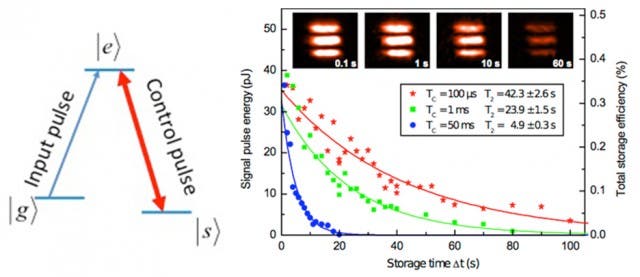Scientists at the University of Darmstadt, Germany have set a new record after they devised an experimental set-up that allowed them to stop light in its tracks for a full minute. During this time, the light could have traveled 18 million kilometers or roughly the equivalent of 20 there and back trips to the moon. Beyond being a simple curiosity, the feat might prove valuable in developing more secure quantum information networks.
This latest effort is the culmination of various previous attempts to halt the fastest thing in the Universe. Back in 1999, researchers slowed light to a sluggish 17 meters per second, basically putting light at rest when compared to its typical cruising speed of 300 million meters per second. Two years later, they managed to bring it to a complete halt albeit only for a fraction of a second, while earlier this year light was stopped in its tracks for 16 seconds using cold atoms.
Hey, wait just a minute. You’re going too fast
George Heinze and colleagues devised a set-up in which they fired a laser aimed at an opaque crystal, thus making its atoms cross into a quantum superposition of two states. This made the crystal actually become transparent over a narrow frequency band. A second beam was fired, but the researchers were careful to switch the first laser while the second beam was still through the crystal. This caused the crystal to lose its transparency and the second beam to become halted.

The storage time depends on the crystal’s superposition and the German scientists found that applying a magnetic field extends this period. However, the magnetic field complicates the laser configuration control that needs to be extremely precise. The gains and trade offs were balanced eventually after the researchers developed an algorithm that outputted the optimum combination of magnetic field and laser, allowing them to trap light for a whole minute.
They also used the trap to store and then retrieve an image consisting of three stripes. “We showed you can imprint complex information on your light beam,” says Heinze.
Tens of seconds of light storage are needed for a device called a quantum repeater, which would stop and then re-emit photons used in secure communications, to preserve their quantum state over long distances. Light could be trapped for even longer periods of time using different crystals, according to the scientists.
The findings were reported in a paper published in the journal Physical Review Letters.


